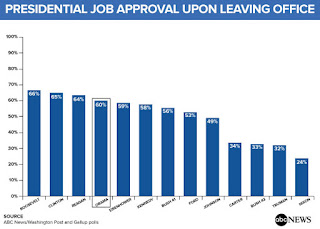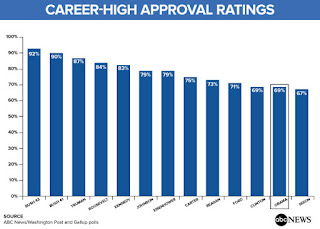U.S. consumer prices, driven up by rising energy costs, rose moderately in December, closing out a year in which consumer inflation rose at the fastest pace in five years.
The Labor Department reported Wednesday that its consumer price index increased 0.3 percent last month, up from a 0.2 percent gain in November. Energy prices, which have been rebounding, were up 1.5 percent, led by another jump in gasoline pump prices. Food costs were unchanged for the fifth straight month.
For all of 2016, prices were up 2.1 percent, compared to a 0.7 percent rise in 2015. It was the largest annual increase since a 3 percent jump in 2011. Core inflation, which excludes food and energy, was up 0.2 percent in December and 2.2 percent for the year.
After four years of extremely low inflation, prices have begun to accelerate with both overall inflation and core inflation above the 2 percent target set by the Federal Reserve. The low inflation figures had allowed the central bank to keep interest rates at ultra-low levels with its key rate at a record low near zero for seven years.
The Fed has now boosted rates twice in December 2015 and again last month by modest quarter-point moves. Fed officials are projecting that they will boost rates another three times in 2017. Fed officials continue to stress that they believe prices will be rising by modest amounts that will allow them to move interest rates up gradually.
For 2016, food costs actually declined 0.2 percent for the 12 months ending in December while energy costs were up 5.4 percent from a year ago.
Medical care services was one of the fastest rising categories last year, rising by 3.9 percent over the past 12 months.
New car prices were up a slight 0.3 percent but used car prices were down 3.5 percent and clothing prices were down 0.1 percent over the past 12 months.
In addition to a big fall in energy costs, inflation has been kept low in recent years by a rise in the value of the dollar against foreign currencies which makes imports, including clothing imports, cheaper for U.S. consumers.
The Fed has used low interest rates and other measures to provide a boost for the U.S. economy as it struggled to emerge from the worst recession since the 1930s.
Sixty percent of Americans in the latest ABC News/Washington Post poll approve of Obama’s job performance, the most since June 2009, five months after he took office. Sixty-one percent approve of his handling of the economy, a career high. And as many express a favorable opinion of him personally, the most since November 2009.
These ratings stand in contrast to Donald Trump’s; as reported Tuesday, just 40 percent approve of his handling of the transition, about half the average for recent incoming presidents, and an identical 40 percent see him favorably, a third lower than Obama’s rating and the lowest for any president-elect in polls dating to Jimmy Carter in 1977.
Obama’s end-of-presidency rating is in the top tier of ABC/Post polls, and Gallup polls before them, back to the days of Franklin Roosevelt – just behind Roosevelt, Bill Clinton and Ronald Reagan, and alongside Dwight Eisenhower and John F. Kennedy.
Yet Obama’s ratings in this poll, produced for ABC by Langer Research Associates, reflect a turnaround for him, not his norm. His average job approval rating across his presidency, 50 percent, is in the lower tier, alongside George W. Bush, Richard Nixon, Gerald Ford, Harry Truman and Carter.
In another measure, 51 percent think Obama will go down in history as an above-average president. That’s slightly more than said so about Bill Clinton (47 percent) and many more than ho said so about George H.W. Bush (36 percent) or, especially, George W. Bush (16 percent). (Twenty-six percent think Obama will be seen as an “outstanding,” president; next closest is Clinton, 15 percent.)
Obama also finishes comparatively well in other areas. His approval rating for handling health care, 52 percent, is, like his overall approval, its highest since June 2009. And he has 53 percent approval on handling terrorism, his best on this score since January 2012.
Intensity of sentiment, likewise, is unusually favorable to Obama as he leaves office. Forty-two percent of Americans approve “strongly” of his work as president, while 27 percent strongly disapprove; that 15-point positive gap is its biggest since April 2009. There’s also a 16-point positive gap in his approval on the economy, a career high. On health care and terrorism, by contrast, strong sentiment is about equal among approvers and disapprovers alike.
Back Story
Obama entered office confronted with the deepest economic downturn since the Great Depression; the long lag in recovery defined his central challenge. His final-lap gain in approval reflects the fact that more Americans than at any point since 2006 now say the economy is in excellent or good shape – even though just 51 percent hold that view.
Obama’s fall from broad approval at the start of his presidency was relatively swift. From a peak of 69 percent three months after taking office, he fell to 50 percent approval by the end of his first year in office, then as low as 42 percent in October 2011.
He recovered, albeit just back to 50 percent, in time to win re-election, but then headed back down, to a career low 40 percent in October 2014. Obama regained approval levels in the mid-50s in his second term only recently, starting last June.
Notably, Obama neither hit the heights nor plumbed the depths of previous presidents. George W. Bush, George H.W. Bush and Harry Truman saw the highest approval ratings on record, 92, 90 and 87 percent, respectively – about 20 points better than Obama’s best. Yet Truman and George W. Bush also saw the lowest approval ratings on record, 22 and 23 percent, respectively – 18 and 17 points worse than Obama’s worst.
Groups
As has been the case throughout his career, evaluations of Obama’s performance in office range from near-unanimous praise to overwhelming disapproval within groups – even as he’s hit new highs in approval among many of them.
Approval peaks among blacks and Democrats, with nearly all (92 and 90 percent, respectively) approving of the president’s performance. It’s also high among liberals (85 percent), Hispanics (85 percent), those living in urban areas (75 percent) and those without a religious affiliation (72 percent). Democratic approval of Obama has been high throughout his presidency, ranging from 95 percent in March of his first year to a low of 73 percent in September 2011.
On the other side, 18 percent of Republicans approve – few, but better than his low, 7 percent in March 2015. Twenty-six percent of strong conservatives approve, rising to 45 percent of “somewhat” conservatives.
Approval also falls below half among whites, 47 percent, ranging from 40 percent among white men without a college degree to 67 percent among college-educated white women. A majority of whites haven’t approved of Obama’s work in office since July 2009; this final in-office reading matches the closest he’s gotten to drawing even among whites since November of that year.
Other notable lows include 30 percent approval from evangelical white Protestants and 35 percent among those who say the economy is currently not so good or poor – still nearly half the public.
In the middle are independents, with 61 percent approving – a marked improvement from a year ago, when fewer than half said the same. Obama also has seen gains among moderates, now at 68 percent approval, the highest since June 2009 and up 11 points since late September.
Finally, the president’s legacy loomed large over the November elections, and this appears in his final ratings. Essentially all Americans who wanted Hillary Clinton to win the election approve of Obama’s work in office (97 percent), as do 64 percent of those who didn’t like either major-party candidate.
Among those who preferred Trump, by contrast, Obama’s approval rating drops to 19 percent. Seventy-nine percent of the incoming president’s supporters disapprove of the work carried out by his predecessor.
Methodology
This ABC News/Washington Post poll was conducted by landline and cellular telephone Jan. 12-15, 2017, in English and Spanish, among a random national sample of 1,005 adults. Results have a margin of sampling error of 3.5 points, including the design effect. Partisan divisions are 31-23-37 percent, Democrats-Republicans-independents.
The survey was produced for ABC News by Langer Research Associates of New York, N.Y., with sampling, data collection and tabulation by Abt-SRBI of New York, N.Y. See details on the survey’s methodology here.
Source: ABC News









No comments:
Post a Comment